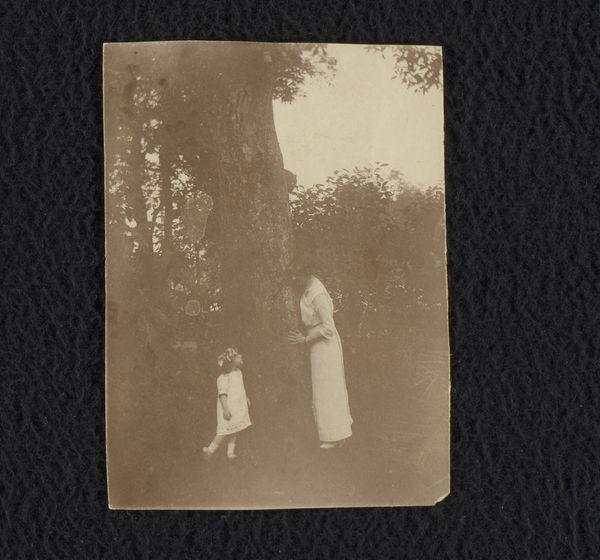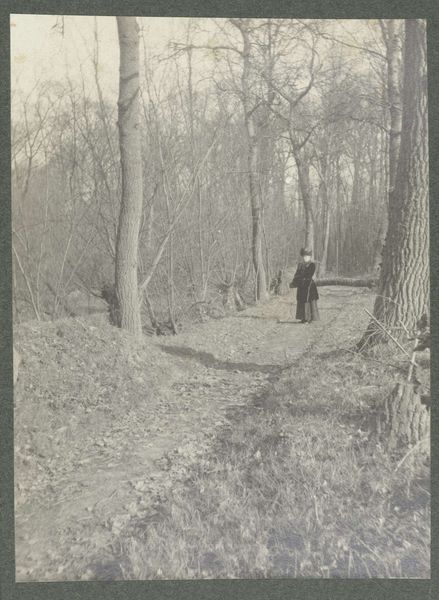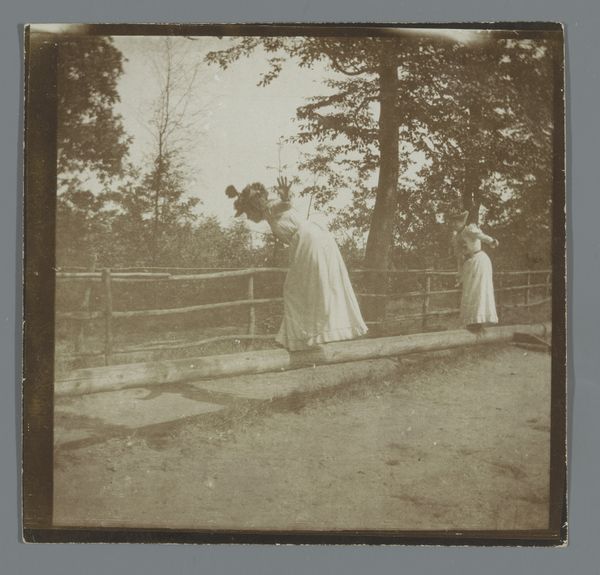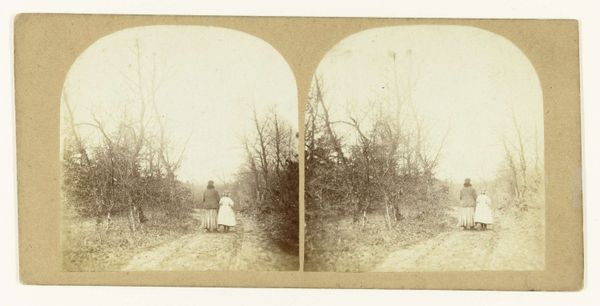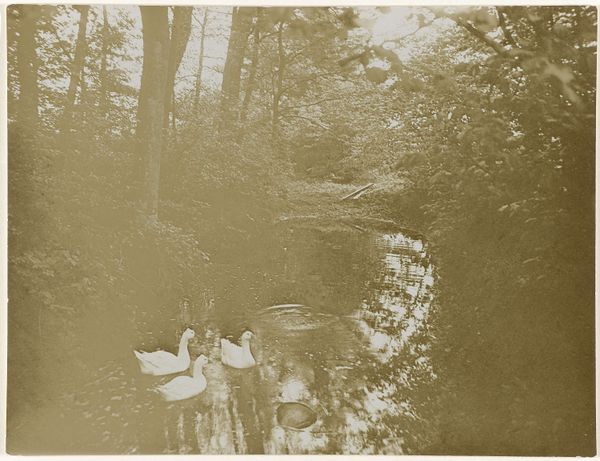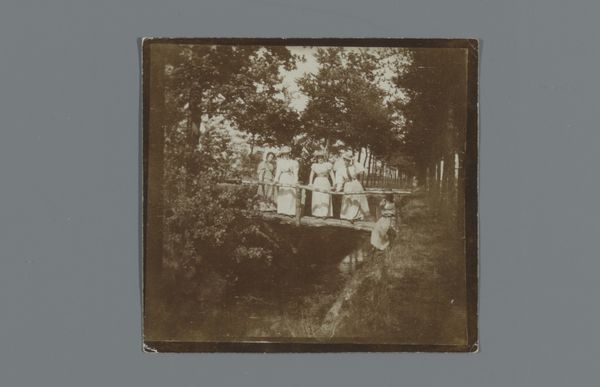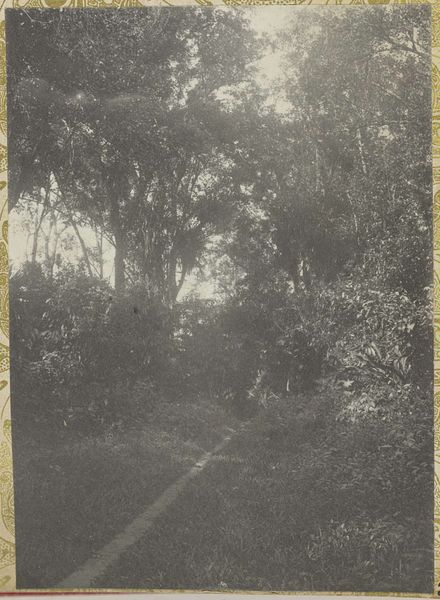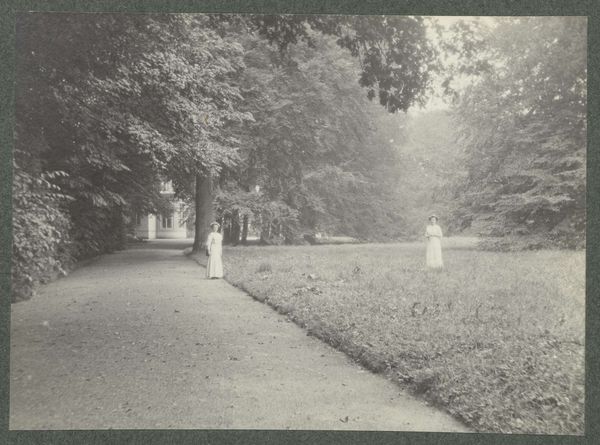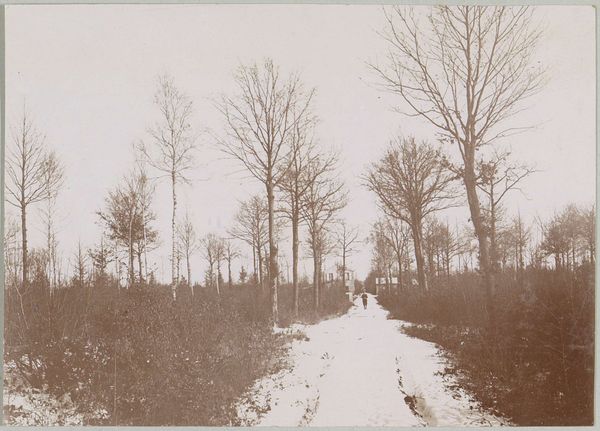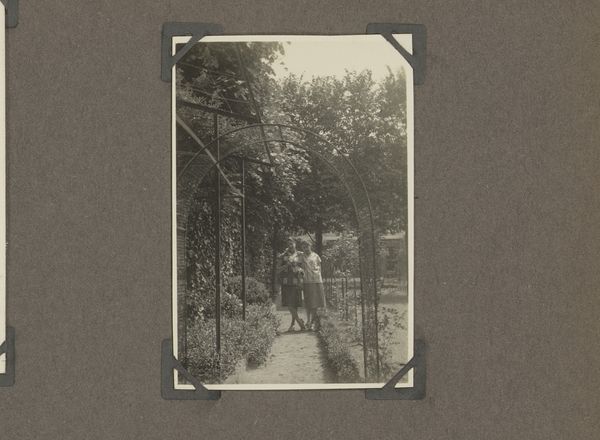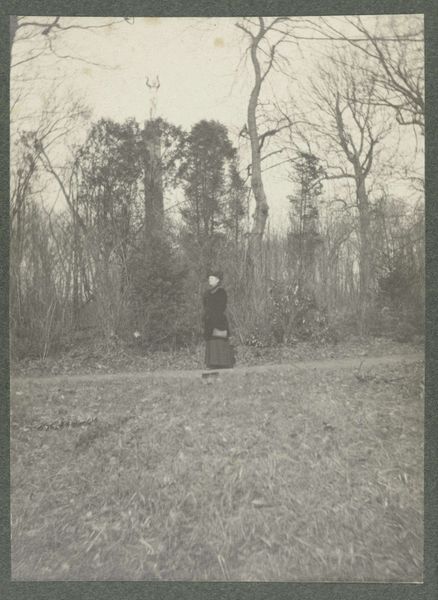
cyanotype, photography
#
pictorialism
#
landscape
#
cyanotype
#
photography
Dimensions: height 77 mm, width 111 mm
Copyright: Rijks Museum: Open Domain
Curator: Hendrik Doijer captured "To en Anton op Tourtonne" sometime between 1903 and 1910, utilizing the cyanotype process in photography. The image presents us with a striking landscape. Editor: There's such a dreamy, ethereal quality to it, isn't there? Almost feels like looking at a memory. The monochrome blue really amplifies that wistful atmosphere. Curator: Indeed. The cyanotype technique itself, with its characteristic Prussian blue hues, adds to this quality. The figures—two children, it appears—walking along the path are integral to the narrative. The artist might have aimed to evoke feelings tied to youth and family in the countryside. Editor: And how interesting that they're positioned on a path! A clear symbol of a journey or a transition. Were photographs like these popular expressions of familial prosperity? Is it an image meant to emphasize leisure during that era, with the two young children taking a stroll? Curator: Possibly. During the pictorialism movement, this type of photograph aimed for artistic effects, similar to painting. Symbolism plays a prominent role; beyond childhood, we should think about what paths, walking, and destinations mean to different individuals or societal groups at this time. What limitations were in place regarding physical autonomy? Editor: Absolutely, that’s key. It would be interesting to consider who those figures are in relation to the photographer—the role of childhood and the ways ideas of childhood inform nation building in the late 19th and early 20th century. A deeper dive into the subjects could really complicate an easy interpretation. Curator: This image operates within established artistic symbols, creating its meaning through the interplay between light, shadow, and recognizable forms like figures and pathways. It presents a world infused with dreams, family bonds, and cultural meaning. Editor: Yes, and analyzing these elements together encourages us to connect history with contemporary relevance—particularly regarding memory, leisure, labor and identity construction during that specific time. It asks us to examine the visual rhetoric employed and its lasting power.
Comments
No comments
Be the first to comment and join the conversation on the ultimate creative platform.

